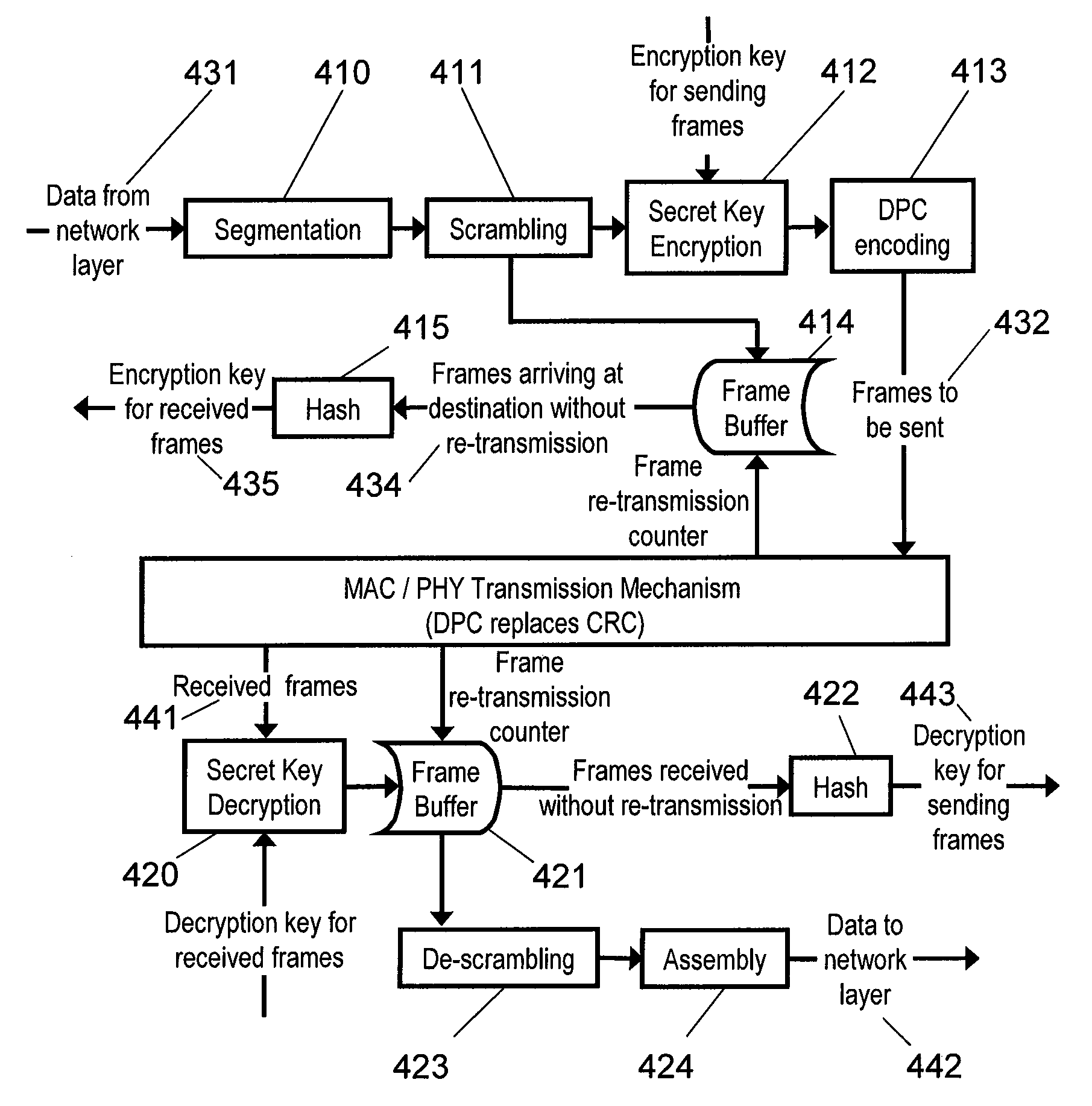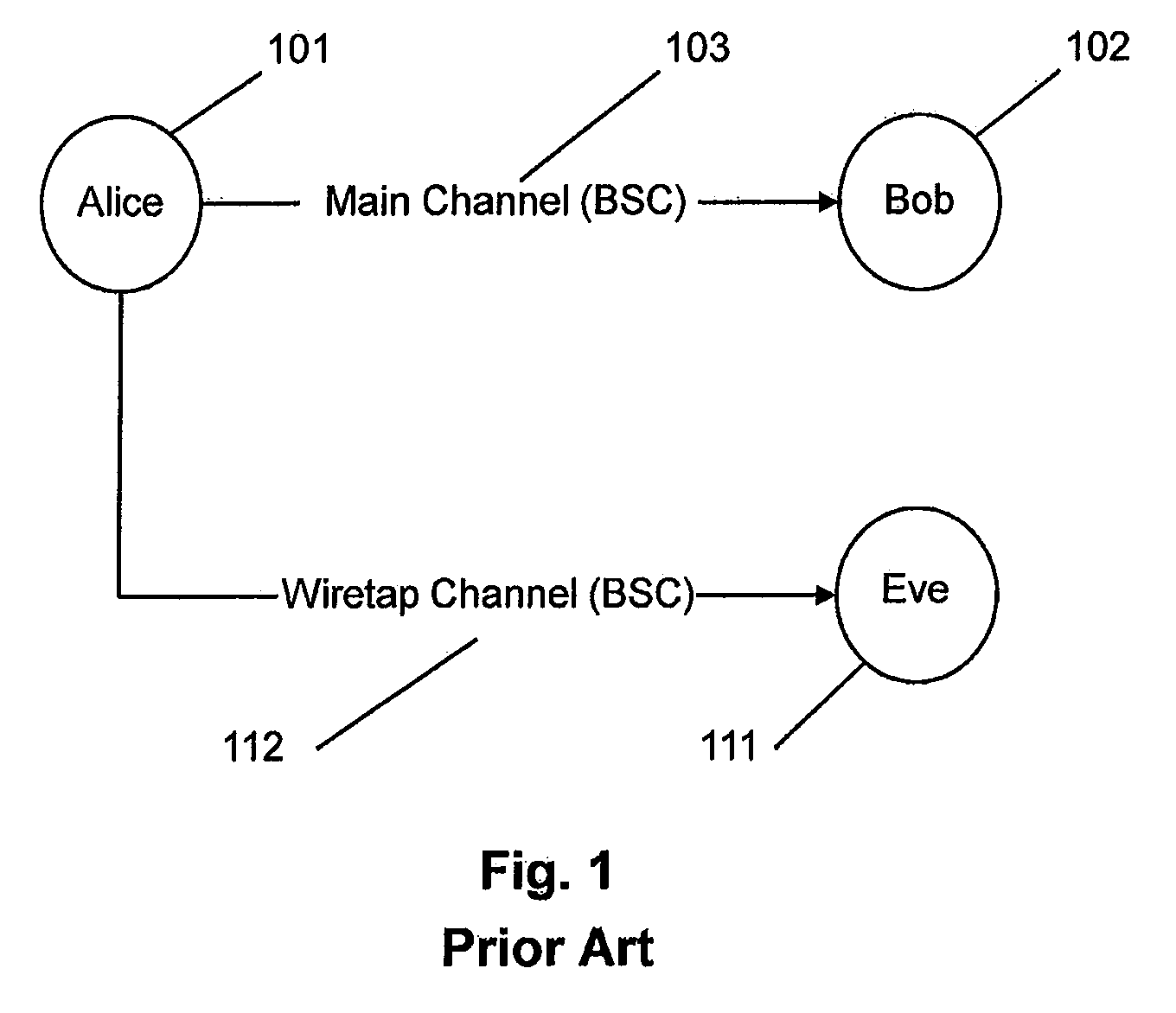Wireless network security using randomness
a randomness and wireless network technology, applied in the field of network security, can solve problems such as difficult to reduce transmission errors, and achieve the effect of improving the performance of radio communication systems
- Summary
- Abstract
- Description
- Claims
- Application Information
AI Technical Summary
Benefits of technology
Problems solved by technology
Method used
Image
Examples
Embodiment Construction
[0053]The present invention provides computer-based systems and computer-implemented methods for securing communications within a wireless network by utilizing the inherent randomness of wireless networks. The invention provides protocols that enable legitimate users to agree on correctly received messages and use these messages to create shared secret keys. In additional embodiments, the invention provides a digital logic module that can be added to existing wireless nodes.
1. The Theoretical Research
[0054]C. E. Shannon, in “Communication theory of secrecy systems,”Bell System Technical Journal, vol. 28, pp. 656-715, 1949, was the first to study communication security from the information theory perspective. Shannon's source coding theorem states that, on average, the number of bits needed to represent the result of an uncertain event is given by its entropy. Shannon's noisy-channel coding theorem states that reliable communication over noisy channels is possible if the rate of comm...
PUM
 Login to View More
Login to View More Abstract
Description
Claims
Application Information
 Login to View More
Login to View More - R&D
- Intellectual Property
- Life Sciences
- Materials
- Tech Scout
- Unparalleled Data Quality
- Higher Quality Content
- 60% Fewer Hallucinations
Browse by: Latest US Patents, China's latest patents, Technical Efficacy Thesaurus, Application Domain, Technology Topic, Popular Technical Reports.
© 2025 PatSnap. All rights reserved.Legal|Privacy policy|Modern Slavery Act Transparency Statement|Sitemap|About US| Contact US: help@patsnap.com



